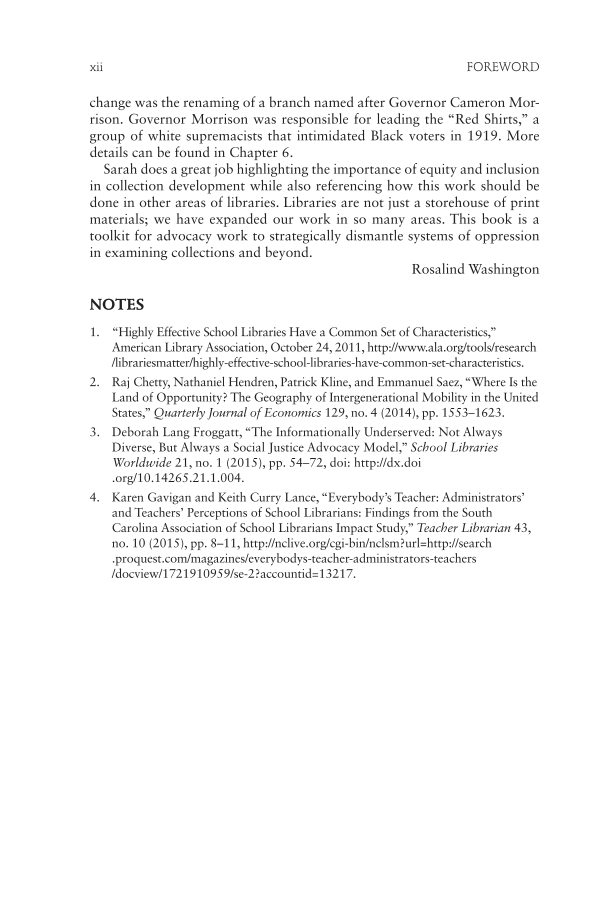xii Foreword change was the renaming of a branch named after Governor Cameron Mor- rison. Governor Morrison was responsible for leading the “Red Shirts,” a group of white supremacists that intimidated Black voters in 1919. More details can be found in Chapter 6. Sarah does a great job highlighting the importance of equity and inclusion in collection development while also referencing how this work should be done in other areas of libraries. Libraries are not just a storehouse of print materials we have expanded our work in so many areas. This book is a toolkit for advocacy work to strategically dismantle systems of oppression in examining collections and beyond. Rosalind Washington NOTES 1. “Highly Effective School Libraries Have a Common Set of Characteristics,” American Library Association, October 24, 2011, http://www.ala.org/tools/research /librariesmatter/highly-effective-school-libraries-have-common-set-characteristics. 2. Raj Chetty, Nathaniel Hendren, Patrick Kline, and Emmanuel Saez, “Where Is the Land of Opportunity? The Geography of Intergenerational Mobility in the United States,” Quarterly Journal of Economics 129, no. 4 (2014), pp. 1553–1623. 3. Deborah Lang Froggatt, “The Informationally Underserved: Not Always Diverse, But Always a Social Justice Advocacy Model,” School Libraries Worldwide 21, no. 1 (2015), pp. 54–72, doi: http://dx.doi .org/10.14265.21.1.004. 4. Karen Gavigan and Keith Curry Lance, “Everybody’s Teacher: Administrators’ and Teachers’ Perceptions of School Librarians: Findings from the South Carolina Association of School Librarians Impact Study,” Teacher Librarian 43, no. 10 (2015), pp. 8–11, http://nclive.org/cgi-bin/nclsm?url=http://search .proquest.com/magazines/everybodys-teacher-administrators-teachers /docview/1721910959/se-2?accountid=13217.
Document Details My Account Print multiple pages
Print
You have printed 0 times in the last 24 hours.
Your print count will reset on at .
You may print 0 more time(s) before then.
You may print a maximum of 0 pages at a time.

































































































































































